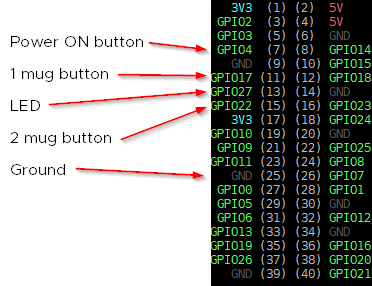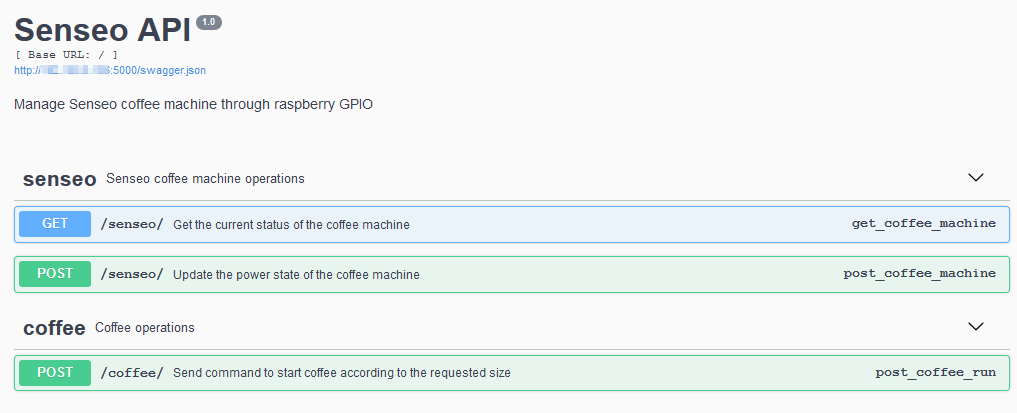Senseo APi¶
This module aims to provide a simple way to manage a Senseo Coffee machine through a Raspberry Pi’s GPIO and a REST API.
The possible use case is to plug the Senseo machine to a Raspberry Pi µ-computer by using its GPIO and to remotely use the REST API to start/stop the machine, and, to start a coffee production.
Note: This setup is mainly for fun usage as it does not manage the water or coffee dose filling.
Installation proccess¶
Download sources, unzip, goes to sources-folder.
Configuration¶
Prepare configuration files in your home dir:
mkdir -p ~/.senseo-api
cp ./logging.json ~/.senseo-api/
cp ./senseo_config.json ~/.senseo-api/
The content of the senseo_config.json must be customized
depending on the GPIO PIN setup you want to use.
For example:

Pinout example
{
"1_mug_button": 17,
"2_mug_button": 22,
"led": 27,
"power_button": 4
}
Ground is not setup as you can use any of the available GND of
your GPIO board to plug it.
You can use the pinout command of gpiozero (as explained here
raspberrypi.org) to get the current GPIO PIN numbers:
sudo pip install gpiozero
pinout
Or the useful pinout.xyz web site.
Usage¶
Senseo API¶
The senseo API use the flask/flask_restplus module to provide
API and Swagger documentation.
To run the developpement server:
senseo-api
Join the http://<your_IP_address>:5000 URL to get the swagger
interface:

Swagger UI
Senseo Simulator¶
A quick&dirty machine simulator is available in the package with the
command senseo-simulator:
senseo-simulator --help
Usage: senseo-simulator [OPTIONS] COMMAND [ARGS]...
Execute the Senseo Simulator
Options:
--help Show this message and exit.
Commands:
heat Simulate a ready coffee machine
off Simulate a power off action
on Simulate a power on action
read Read the values on the buttons
Warning: If you want to use the simulator withreadcommande, run it before thesenseo-api. If needed to restart it, stopsenseo-api, run the simulator, start thesenseo-apiagain.
